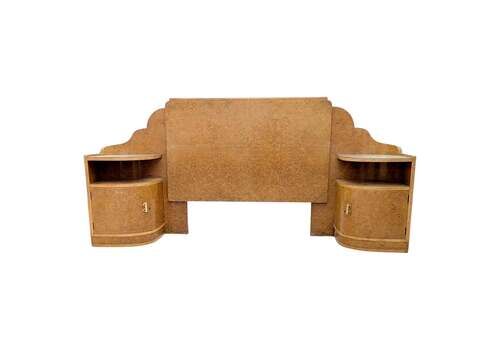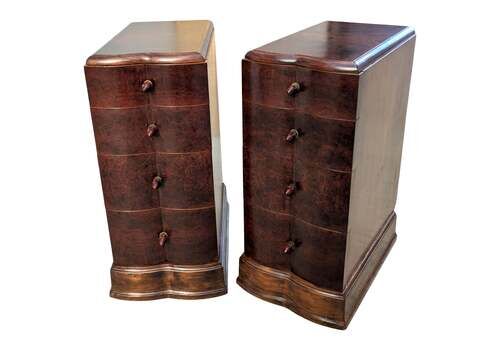Lapis Spartanus Grecian Porphyry & Imperial Egyptian Porphyry Centre Table
£12,500
Shopping at Vinterior
-
14-day return guarantee
-
Outstanding customer service
-
Secure payment
-
Buyer protection
-
Trees planted for every purchase

Item details
Height
68.33 cm
Width
70.24 cm
Depth
70.24 cm
Wear conditions
Good
Wear conditions
Excellent
Shows little to no signs of wear and tear.
Good
May show slight traces of use in keeping with age. Most vintage and antique items fit into this condition.
Average
Likely to show signs of some light scratching and ageing but still remains in a fair condition.
Apparent Wear and Tear
Visible signs of previous use including scratches, chips or stains.
Please refer to condition report, images or make a seller enquiry for additional information.
Description
A 19th-century Porphyry Centre Table – A Greco Roman influenced masterpiece
Incorporating one of the World’s absolute rarest stones, Spartan Porphyry
Important and rare late 19th century Lapis Spartanus Grecian Porphyry & Imperial Egyptian Porphyry centre table. The rarity of the stone set within this fabulous table cannot be overstated. The deepest green groundmass filled with the most incredible yellow green and creamy white snowflake star shaped phenocrysts of plagioclase Feldspar create the most dramatic of appearances. The characteristics of this superlatively figured example are the rarest you could ever find. The Roman Lawyer & most respected collector of ancient decorative stones used by the Romans, Avvocato Faustino Corsi ( 1771-1846 ), noted that Porfido Verde Antico, of which this stunning piece incorporates, is the rarest of varieties & ”was only ever found in rather small pieces”. The incredibly rare & ancient geological specimen held within the upper & lower plateau within this table has been veneered to form two large surfaces, with the upper part crossbanded in Imperial Egyptian Porphyry. The top of each monopedic leg has a delightfully cast Rams’ head to further enhance the Roman feel. The main & most important stone comes from the Levetsovo or Krokees area in the Laconia region in Greece. The form of this wonderful table highlights the true beauty of Greco Roman design to its fullest.
The extraordinary variety of Porphyry that is the main stone in this masterpiece comes from the ancient area that was Sparta. There are a few carvings of this stone that date to the Minoan & Mycenaean civilizations, but the later Greeks did not use it. It was the Romans, in the first Century CE, who adopted & used this truly fabulous stone with great relish. Authors from ancient times have referred to it under various names, such as ”Lapis Laxedaemonius”, after the ancient name for Laconia; ”Lapis Taygetas” from the name of the mountain range where it would have been quarried; ”Lapis Croceus” after the nearby town of Croceae, now called Krokeai or Krokees, and ”Lapis Spartanus” because Krokeai was located very near the city of Sparta.
The Red Imperial Porphyry, or Lapis Porphyrites, was quarried by ancient Romans at Mons Porphyrites, part of the modern Gebel Dokhan in Egypt, following its discovery in the age of Emperor Tiberius (14-37 AD). Due to the exceptional quality of its surface and its rarity Porphyry was employed only for the grandest and most important commissions, from temples such as the Pantheon to monuments such as the portrayal of the Four Tetrarchs, now in Venice, and the sarcophagi of Emperor Constantine’s Family. Porphyry was forbidden to be used in works of art by the lexpurpurea, an ancient Roman law that forbade its use by anyone but the Imperial Family.
Excavations at Mons Porphyrites had ceased by the early 5th century AD and, whilst Porphyry continued to be the prerogative of rulers throughout late antiquity. Because of its almost indestructible nature it was also used to signify immortality; in the Vatican, Saint Helen and Saint Constantia, both lie in Porphyry sarcophagi. In 786 Charlemagne was granted permission by Pope Hadrian I to take Porphyry columns from Rome for his cathedral in Aachen. The stone’s true rediscovery took place in Renaissance Italy where in the 16th century the Medici were granted entitlement and the invention of new cutting tools lead to its increasing use.
Following in Charlemagne’s footsteps, sculptors and architects thus reused and cut their works from ancient Roman columns, or the occasional slab found intact since imperial times. This practice continued into the following centuries, as the Egyptian quarry lay dormant until its identification at the beginning of the 19th century. At the end of the eighteenth century deposits appeared in Sweden and Russia whose colour and texture were different to the Porphyry in Egypt. It was thanks to a donation from the Tsar of Russia, that the Emperor’s tomb at Les Invalides was built. It goes without saying that any item incorporating Egyptian Porphyry is highly sought after.
Cancellations
We offer free cancellations and full refund for orders cancelled before dispatching. View full policy.
Returns
We have a 14-day return guarantee for orders from individual sellers, within the UK and European Union. View full policy.
Free collection available
Yes
Similar Consoles
Similar Consoles
You may also like
You may also like
More from this seller
More from this seller
Choose a Wishlist
Create Wishlist
- Selling at Vinterior since 2020
- Ships from London, United Kingdom
Cancellations and Returns
Last updated: 24th March 2025
We want everybody’s Vinterior experience to be seamless, so both buyers and sellers can fall in love with pre-loved. We designed our Terms of sale to treat everybody fairly.
However, sometimes things don’t go exactly to plan, and you may need to cancel or return an order.
To prevent this, we encourage you to check listings, photos and descriptions carefully before you buy. If you aren’t sure about a piece’s condition, size, provenance or shipping, just ask; click Contact seller to get in touch. Always contact your seller first if you have any queries, at any point in your purchase.
Our buyers receive the same protection when buying from all our sellers, both professional and verified.
Can I cancel an order?
There are many reasons why you might need to cancel an order, and you'll often be entitled to a refund. To cancel an order, click Create cancellation on the order page.
If you cancel your order before it has been dispatched, you will receive a full refund - including delivery costs. However, if your item has been shipped, delivery costs will not be included in your refund.
Please note: orders of bespoke, personalised or made-to-order pieces cannot be cancelled.
Can I return an order?
We understand that sometimes a piece isn’t the perfect fit. So if you no longer want your order, our returns process will ensure it finds a new home fast.
The Vinterior Guarantee included with your purchase entitles you to 14-day returns - allowing you to return any item within 14 days of the delivery date (except in specific circumstances, detailed below).
You can return your order if...
It isn't what you expected
If what arrives isn’t what you ordered, you can open a return. Just send us some photo evidence that the listing was inaccurate, misleading or misrepresented your purchased piece, and you’ll receive a refund.
You change your mind
If you don’t feel a piece is right for your space, you can return it. Once you request a change of mind return, you’ll be responsible for shipping the piece back to your seller as soon as possible. Delivery costs are non-refundable.
It's damaged in transit
In the rare event that an item arrives damaged or defective, you have a full 30 days from the date of delivery to return it for a full refund.
If your purchase arrives broken, always let us know. If Proovia delivered the piece, we can raise an insurance claim on the seller’s behalf. Or, the seller can raise a claim with their chosen courier.
What can't I return?
Just as there are some orders you can’t cancel, there are some you cant return, too. Personalised, bespoke or made-to-order pieces are non-returnable, and non-refundable. Sellers may also reject your return if the item has been altered in any way.
Please note: pieces on our site are pre-loved, not new. They may show some wear and tear; this is not sufficient grounds for a refund, unless the seller has misrepresented the item’s condition.
Lastly, neither Vinterior nor our sellers are liable for any damages or loss sustained in transit via third parties.
I'm eligible for a return. Now what?
To initiate a return, log into your Vinterior account, then go to the relevant order page and click Create a return. In the return request, be sure to include all the details: the reason for your return, an in-depth description, and photos of any issues or damage.
How will I receive my refund?
Once the seller confirms they’ve received the item (in the same condition it was sent), we will send your refund to your original payment method.
All items are inspected on return. If the seller receives the return with damage they don’t recognise, we will not be able to process your refund and the seller may need to send the piece back to you. You will be required to cover these delivery costs.








